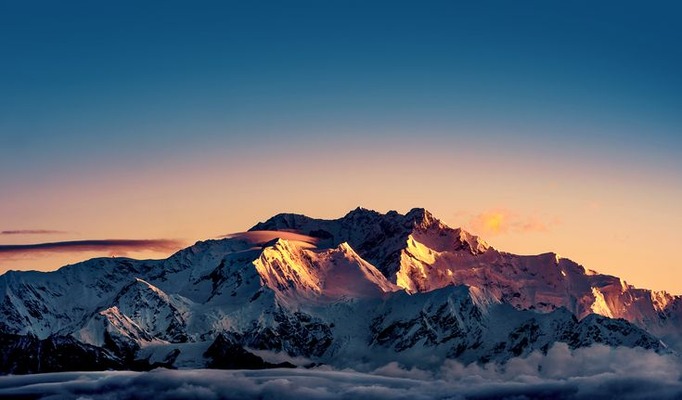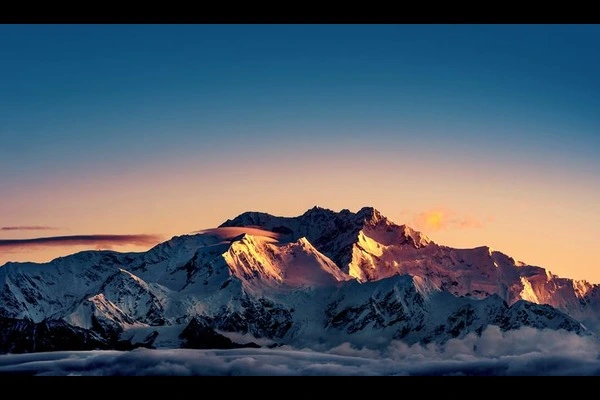My Sandakphu–Phalut Trek: A Himalayan Love Letter

So, there I was, standing on what felt like the edge of the world, the sun peeking over Kanchenjunga, with Everest winking at me from the horizon. My heart was doing cartwheels. The Sandakphu–Phalut Trek, a 68 km ramble along the Singalila Ridge, was everything I didn’t know I needed—wild, humbling, and straight-up magical. If you’re itching to lace up your boots or just dreaming of Himalayan views, grab a snack and let me take you along for the ride.
The Journey: Peaks, People, and a Whole Lot of Awe
My Day-by-Day Adventure
Day 1: Manebhanjyang to Tumling/Tonglu
The trek started with a bumpy 1.5-hour drive from Darjeeling to Manebhanjyang. I was a bundle of nerves and excitement, double-checking my backpack like a kid on their first field trip. The 5–6 km hike to Tonglu was no joke—my calves were already whispering, “You sure about this?” But then, through the trees, I saw Kanchenjunga’s snowy peaks glowing at Tumling. I just stood there, jaw dropped, feeling like I’d stumbled into a postcard.
Day 2: Tonglu to Gairibas via Kalapokhri
Waking up to birdsong and misty forests in Singalila National Park felt like stepping into a fairy tale. The trail to Gairibas was gentle, with rhododendrons popping in pinks and reds. At Kalapokhri, I stopped by this tiny pond, so still it mirrored the pines like a painting. That night, I crashed in a tea house, warming my hands around a mug of chai while the cold air nipped at my nose. It was the kind of cozy that makes you forget the world.
Day 3: Gairibas to Sandakphu
The climb to Sandakphu (11,930 ft) was a sweaty 3–4 hours, and I won’t lie—my legs were begging for mercy. But when I got to the top and saw the “Sleeping Buddha” (that’s what they call the Kanchenjunga massif), I forgot every blister. The sunset turned the sky into a canvas of pinks and oranges, and I just sat there, wrapped in my jacket, feeling like I was part of something bigger.
Day 4: Sandakphu to Phalut
This 21 km ridge walk was a long one, but oh man, the views! Meadows stretched forever, and I was literally hopping between India and Nepal, giggling like a kid at the border markers. Phalut’s sunrise was the cherry on top—golden light spilling over the Himalayas, making me whisper, “Okay, universe, you win.” I may or may not have taken 200 photos.
Day 5: Phalut to Gorkhey and Srikhola/Sepi
The descent was like a love letter to the mountains. I passed tiny villages with kids waving shyly and rice terraces glowing in the sun. In Gorkhey, I shared a laugh with a local grandma over my terrible Nepali pronunciation. By the time I hit Srikhola’s river and the exit road, I was already plotting my next trek, heart full and boots muddy.
What It Felt Like
Every morning, I’d wake up to Everest, Kanchenjunga, Lhotse, and Makalu staring back at me. It wasn’t just a view—it was like the mountains were saying, “Hey, you’re alive, soak it in.” The tea houses were my favorite part—one night I’m swapping stories with an Indian family over steaming dal-bhat, the next I’m learning Nepalese phrases from a grinning host. And let me tell you, nothing beats a hot meal when it’s freezing outside. One evening, I burned my tongue on spicy momos and laughed it off with my trek group—those are the moments I’ll carry forever.
Tips from One Trekker to Another
When to Hit the Trail
Autumn (September–November): This is prime time—crisp days (13–18°C), chilly nights (0–5°C), and views so clear you’ll swear you can touch the peaks.
Spring (March–May): The trails explode with rhododendron blooms, though the skies might play hide-and-seek with haze.
Winter (December–February): Snow makes it a winter wonderland, but it’s freezing. Only go if you’re ready to bundle up like a human burrito.
Getting Your Body Ready
You don’t need to be a gym rat, but a little prep goes a long way. I started jogging 5 km a few weeks before, aiming for under 35 minutes—it helped with the climbs. Altitude is no joke, so take it slow, chug water like it’s your job, and don’t ignore headaches or dizziness. Your body will thank you.
Staying Safe
There’s a small chance of altitude sickness (AMS), so don’t be a hero—pace yourself. Phone signals are hit-or-miss; Jio and Airtel worked for me sporadically, and NCell was handy on the Nepal side. Pack warm layers—nights on the ridge are no joke. I learned the hard way when I underestimated the wind and spent an evening shivering like a leaf.
Packing and the Best Bits of the Trail
What’s in My Backpack
- Clothes: Layer up—base layer, fleece, and a windproof jacket saved me from the cold.
- Boots: Waterproof trekking boots and extra socks (trust me, dry feet are everything).
- Gear: Headlamp, sunscreen, sunglasses, a water bottle (I loved my thermos for hot tea), and snacks like nuts or energy bars.
- First-Aid: Pack altitude meds and blister patches—I dodged AMS but saw a friend struggle.
- Tech: A power bank kept my phone alive. Tea houses charge a small fee for outlets, so don’t expect free juice.
Don’t Skip These Spots
- Kalapokhri Pond: Surrounded by rhododendrons, it’s so peaceful I wanted to stay forever.
- Sleeping Buddha View: From the Sabargram–Sandakphu ridge, Kanchenjunga looks like it’s posing for you.
- Phalut Sunrise: Set your alarm—it’s a bucket-list moment you’ll never forget.
- Tea Houses: Indian or Nepalese, these spots are where you’ll eat, laugh, and feel like family. One night, I tried teaching a local kid to high-five—it was hilarious.
Your Turn to Chase the Mountains
This trek wasn’t just a hike—it was a love affair with the Himalayas. If you’re ready to plan your own Sandakphu–Phalut adventure,
Drop a comment with your thoughts or dreams for this journey.
Follow Destinatinguruji on Instagram and Facebook [@destinationguruji] for more travel stories and real-time updates.
For more visit my website :- exploremountains.com



